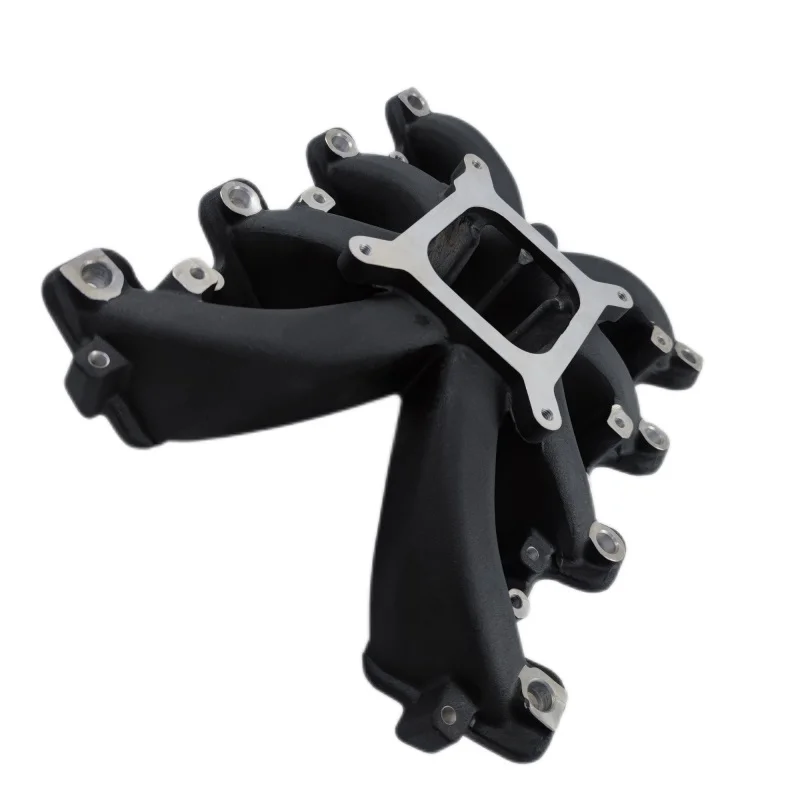Evolving Role of Aluminium Die Casting Components in Manufacturing
In the landscape of modern manufacturing, aluminium die casting components have emerged as essential building blocks for precision engineering. From automotive systems to electronic enclosures, these components deliver the strength, consistency, and efficiency that modern industries demand. Unlike conventional metal-forming methods, die casting uses high-pressure injection of molten aluminum into reusable molds, enabling manufacturers to produce parts with exceptional dimensional accuracy and surface finish.
The evolution of this process reflects a growing need for lightweight yet durable materials that can meet both performance and sustainability standards. As industries push toward energy efficiency and design flexibility, aluminum die casting continues to prove itself as a transformative technology. In this blog post, Vibo, a high precision custom casting parts manufacturing factory, will share the design of aluminum die casting components, as well as its quality control, etc.
Precision and Versatility of Aluminum Alloy Die Cast Parts
At the core of aluminum alloy die cast parts lies a perfect balance between form and function. Aluminium’s inherent characteristics—light weight, corrosion resistance, and excellent thermal conductivity—make it an ideal choice for creating complex geometries and intricate designs. These capabilities allow manufacturers to develop components that not only fit seamlessly into assemblies but also improve overall product performance.
Automotive manufacturers, for example, rely heavily on aluminum die cast parts for engine housings, transmission cases, and structural frames. The precision achievable through this process minimizes the need for secondary machining, ensuring both cost and time efficiency. Meanwhile, in the electronics sector, aluminum die casting enables the production of heat-dissipating enclosures for LED lighting, sensors, and communication devices.
Design Innovation Driven by Custom Aluminium Die Casting Components
The era of mass customization has given rise to custom aluminium die casting components tailored for niche applications. Designers and engineers now collaborate closely with foundries to refine component geometry, wall thickness, and structural integrity. Advanced simulation tools predict flow dynamics and solidification behavior, allowing for better mold design and defect reduction.
These innovations have expanded the possibilities of aluminum die casting far beyond traditional limitations. Complex lattice structures, integrated cooling channels, and hybrid assemblies demonstrate how flexible design approaches can deliver higher performance with fewer materials. Custom casting solutions not only streamline production but also align with the global shift toward lightweight design and sustainability.

Industrial Applications of Aluminium Die Casting Components
The application spectrum of aluminium die casting components spans multiple industries—each benefiting from its precision, consistency, and scalability.
-
Automotive: Lightweight aluminum components contribute significantly to reducing vehicle weight, improving fuel efficiency, and enhancing crash performance.
-
Aerospace: High-strength, heat-resistant aluminum alloys support the development of aircraft systems that require precision and safety under extreme conditions.
-
Electronics: Die-cast aluminum provides both thermal management and electromagnetic shielding, vital for the reliability of electronic devices.
-
Machinery and Automation: Structural frames and housings made from aluminum castings offer durability without adding excessive weight, improving operational stability.
This adaptability makes aluminum die casting a cornerstone technology across sectors seeking to optimize cost, energy, and performance simultaneously.
Sustainability and Efficiency in Aluminum Die Casting Production
The growing adoption of sustainable aluminum die casting processes reflects the manufacturing industry’s response to environmental and economic challenges. Aluminum, being infinitely recyclable, supports a closed-loop production model. Recycled aluminum requires only a fraction of the energy compared to primary smelting, making die casting an environmentally responsible choice.
Modern foundries have also implemented energy-efficient melting systems, vacuum-assisted die casting, and minimal-waste molding designs. These advances not only reduce carbon emissions but also improve yield rates and product uniformity. Moreover, the ability to reuse molds and recycle scrap material aligns with circular economy principles, reinforcing aluminum die casting’s position as a sustainable manufacturing technology.
Quality Assurance and Technological Integration in Aluminum Die Casting
The reliability of high-precision aluminum die cast components depends on meticulous quality control at every stage—from mold design to final inspection. Non-destructive testing methods, including X-ray inspection and coordinate measuring machines (CMM), ensure dimensional accuracy and defect-free casting.
In addition, the integration of Industry 4.0 technologies—such as real-time process monitoring, predictive maintenance, and digital twins—has elevated the quality standards of die casting operations. These digital advancements allow for continuous optimization, reducing downtime while maintaining consistent part quality.
Through data-driven control systems, manufacturers can now detect variations in temperature, pressure, or mold wear instantly, preventing defects before they occur. This convergence of digitalization and metallurgy marks a significant leap in the precision manufacturing of aluminum components.
Future Outlook for Aluminium Die Casting Components
Looking ahead, aluminium die casting components are expected to play a critical role in the next generation of smart, sustainable manufacturing systems. The demand for electric vehicles, renewable energy systems, and advanced consumer electronics will further drive the evolution of lightweight and high-performance aluminum components.
Emerging technologies—such as additive manufacturing integration, vacuum-assisted casting, and new alloy development—promise to expand both design flexibility and mechanical performance. With continuous innovation in automation, surface finishing, and alloy refinement, aluminum die casting will remain at the forefront of modern engineering solutions.
Conclusion
Aluminium die casting has evolved from a simple production technique into a symbol of industrial precision and sustainability. Its ability to merge strength, lightness, and design complexity underpins innovations across diverse sectors. Whether through custom designs, digitalized manufacturing, or eco-conscious production, aluminium die casting components continue to define the standards of modern industrial manufacturing.
As industries pursue efficiency and resilience in the face of global transformation, aluminum die casting stands as both a technological foundation and a pathway toward a lighter, smarter, and more sustainable future.
www.viboprecision.com
Vibo